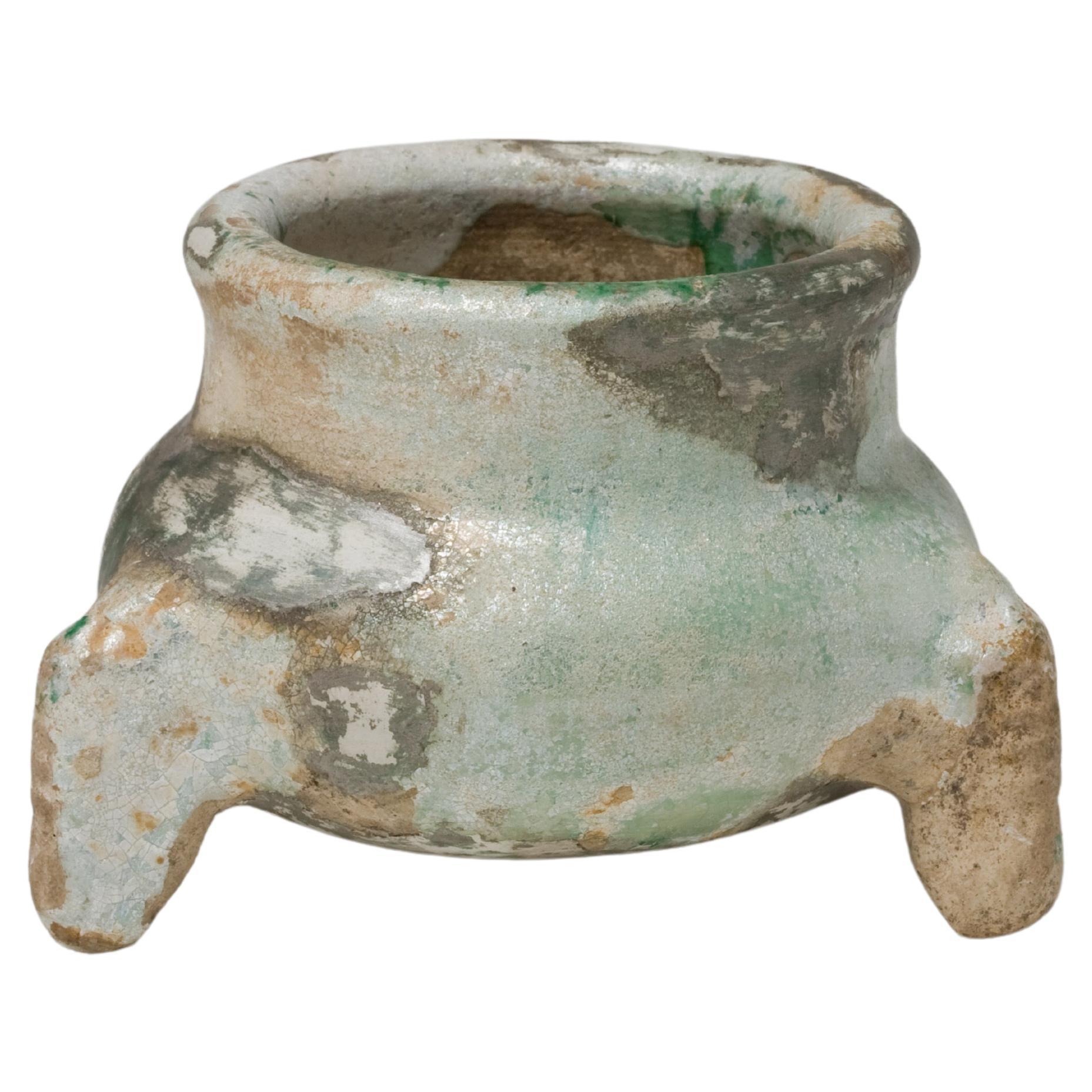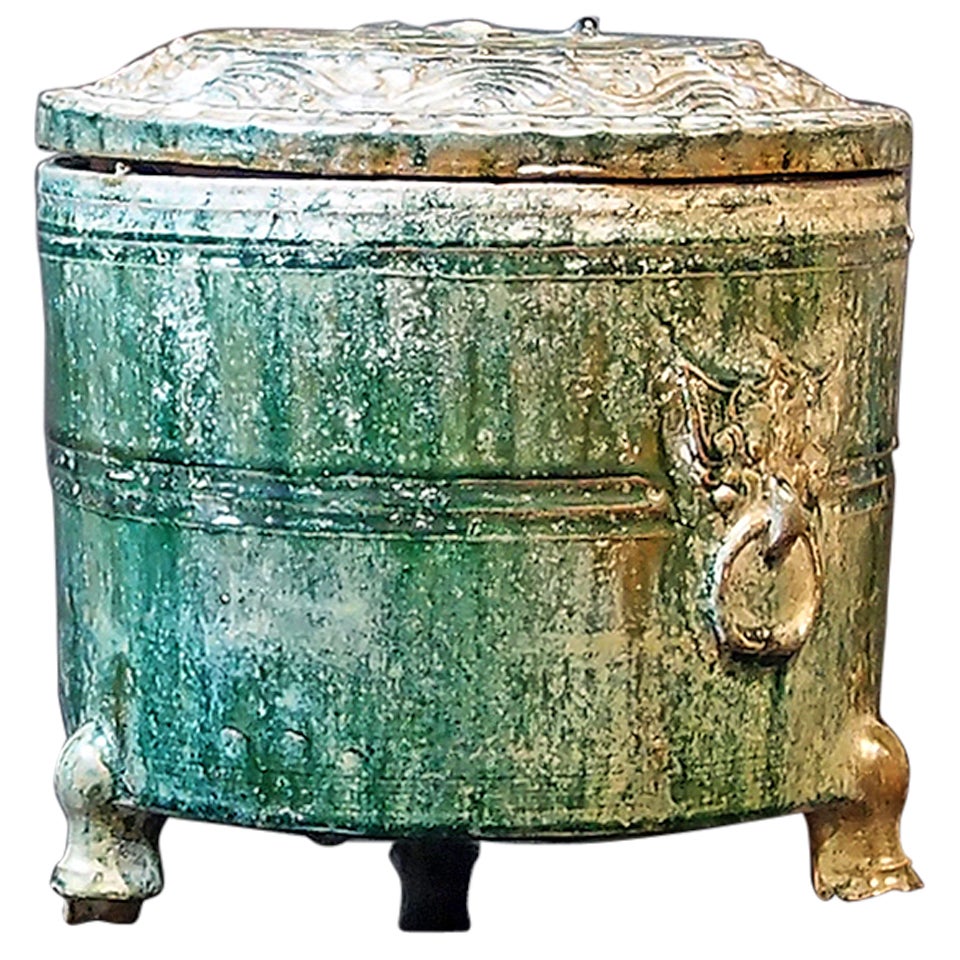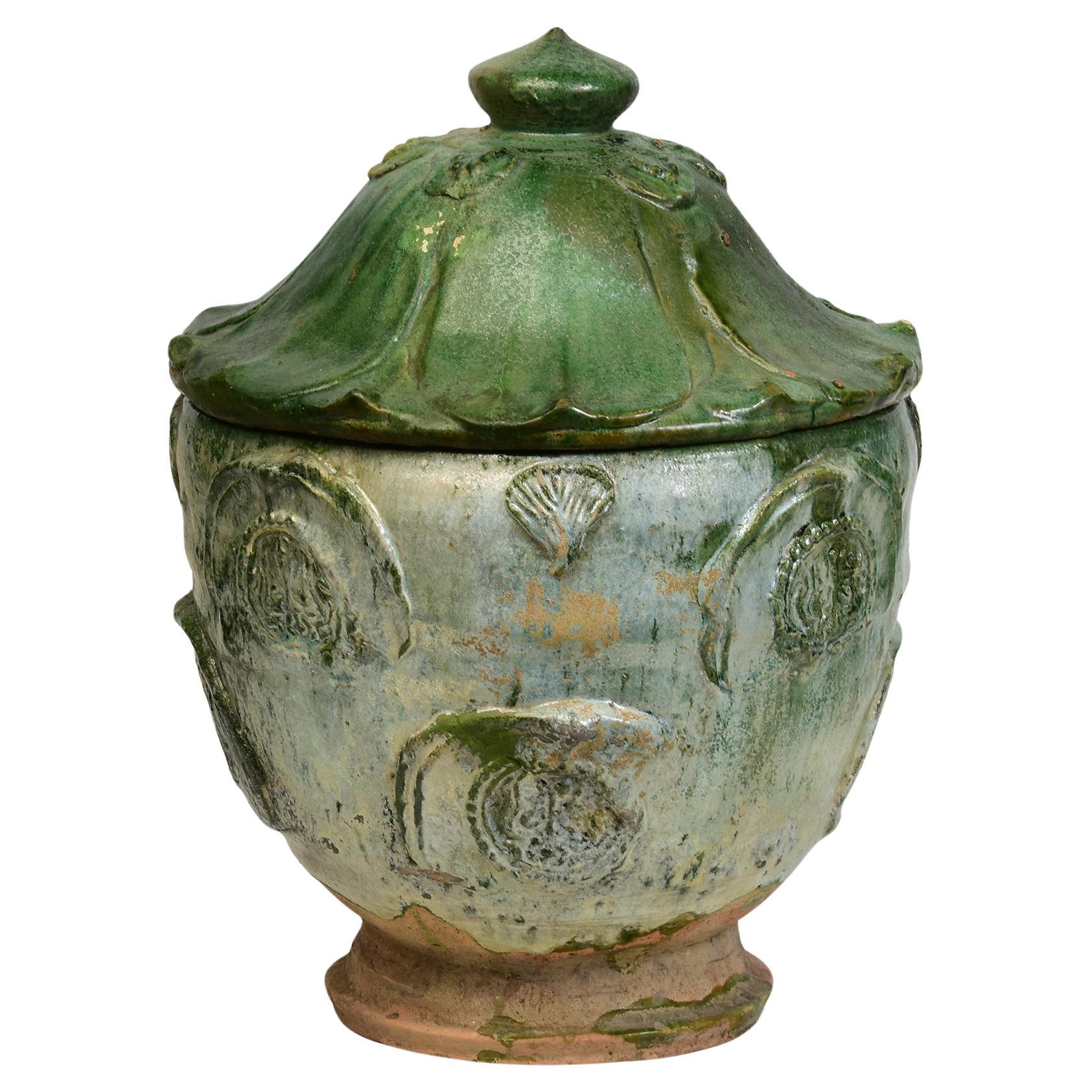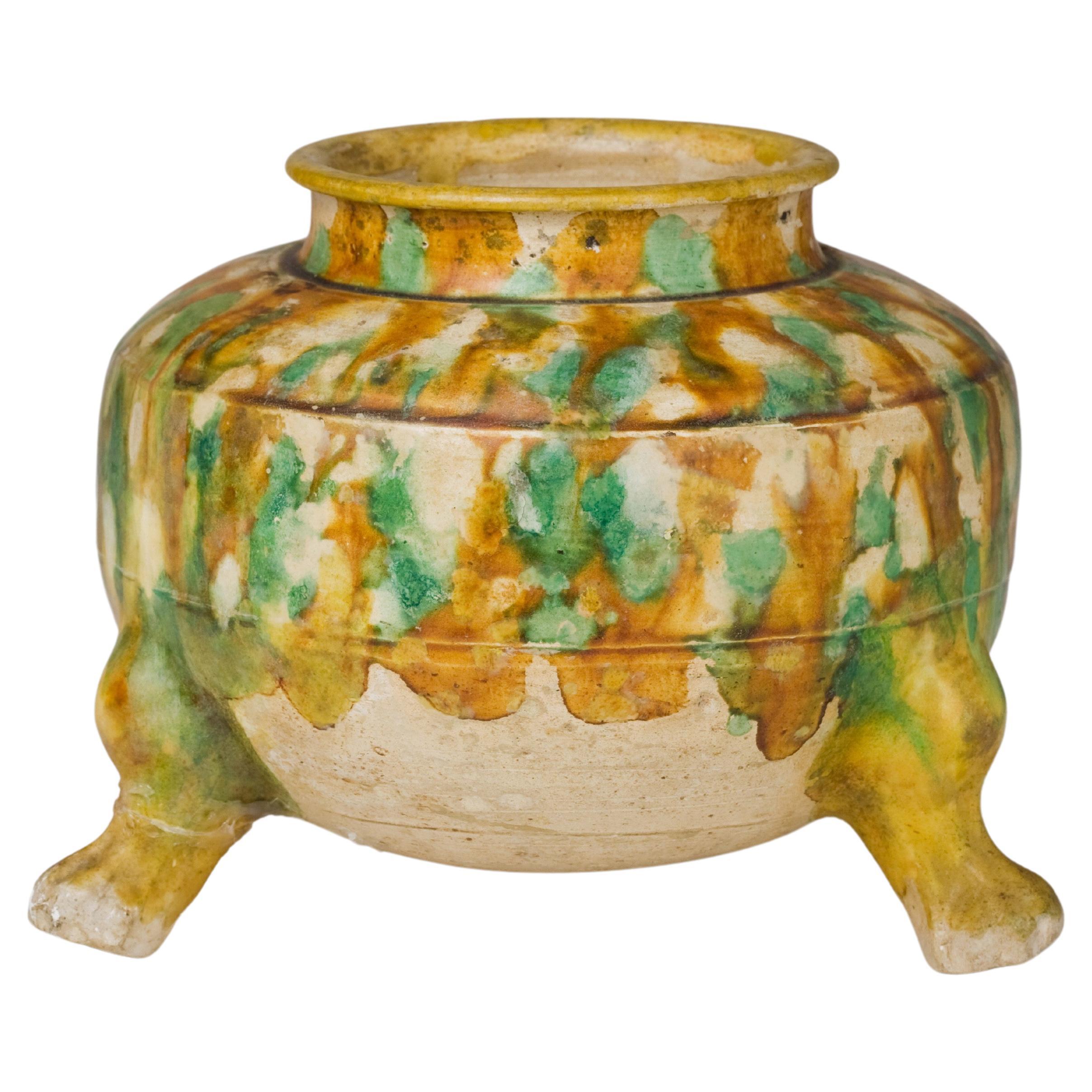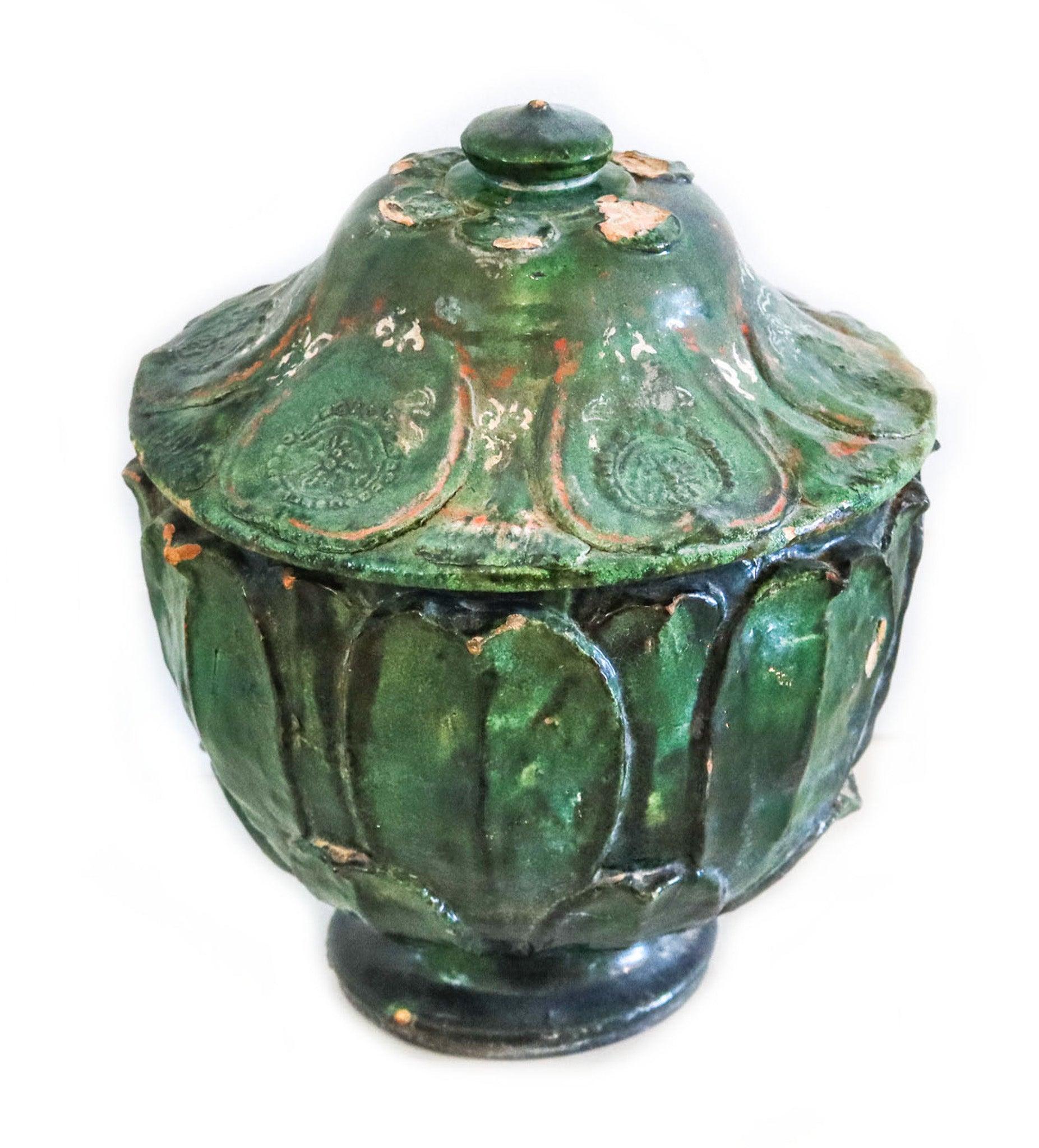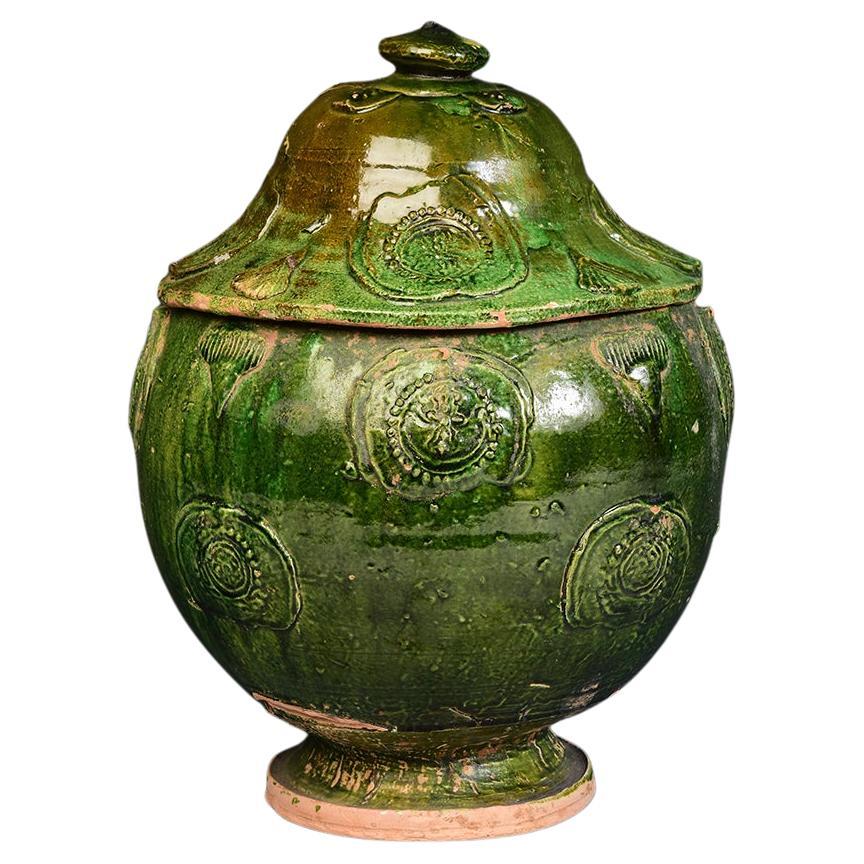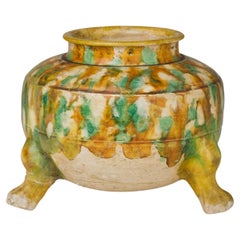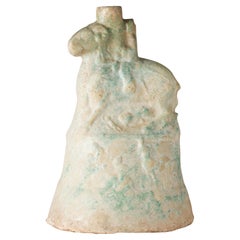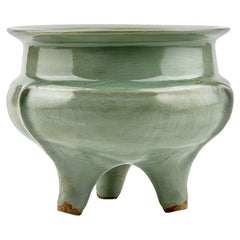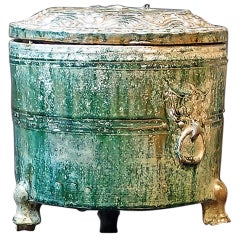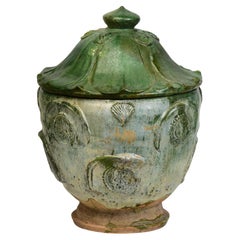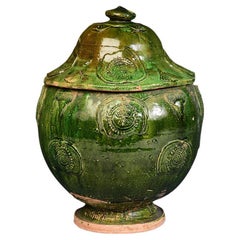Items Similar to Green-glazed pottery tripod 'hill' jar, Han Dynasty, 206 BC - 220 AD
Want more images or videos?
Request additional images or videos from the seller
1 of 21
Green-glazed pottery tripod 'hill' jar, Han Dynasty, 206 BC - 220 AD
$2,242.50
$2,99025% Off
£1,702.47
£2,269.9625% Off
€1,947.26
€2,596.3525% Off
CA$3,133.10
CA$4,177.4625% Off
A$3,484.69
A$4,646.2525% Off
CHF 1,819.60
CHF 2,426.1325% Off
MX$42,404.95
MX$56,539.9425% Off
NOK 23,239.02
NOK 30,985.3625% Off
SEK 21,794.10
SEK 29,058.8025% Off
DKK 14,533.15
DKK 19,377.5325% Off
Shipping
Retrieving quote...The 1stDibs Promise:
Authenticity Guarantee,
Money-Back Guarantee,
24-Hour Cancellation
About the Item
The modelled animal figures and landscapes of this piece represent the Daoist ideology of the Han dynasty. The mountain-shaped lid refers to the sacred dwellings of the immortals, the Kunlun mountains, which was ruled by the Queen Mother of the West. The sides decorated with stylized fantastic animals. A pottery covered jar, zun, of cylindrical form, supported on three moulded feet in the form of bears that rest their hands on their knees. The straight sides are evenly divided into two parts by two ridges. "Iridescence" is observed in surface.
Period : Han Dynasty (206 BC - 220 AD)
Type : Green-Glazed
Medium : Earthenware
Provenance : Acquired in 1999, Hongkong
Reference : British Museum incence burner (Museum number 1909,0512.29)
* Han Dynasty Green-Glaze
Han Dynasty Green Glaze Pottery represents a significant aspect of ancient Chinese ceramics. Spanning from 206 BCE to 220 CE, this period marked a considerable advancement in pottery techniques and aesthetic refinement compared to earlier times.
The pottery is renowned for its distinctive green glaze, achieved through the use of copper-containing glazes. These glazes produced the green color during firing, as compounds with copper oxide reacted. This green glaze imparted a unique artistic effect, reflecting significant artistic values in Chinese society of the time.
Han Dynasty pottery also showcased advancements in form and design, reflecting the complexity and sophistication of the society and culture. These pieces, varying in shapes and sizes, often featured intricate decorations. Many were used as burial objects, reflecting ancient Chinese beliefs about death and the afterlife.
Reference : Ben Jassens Oriental Art
- Dimensions:Height: 10.08 in (25.6 cm)Diameter: 7.88 in (20 cm)
- Style:Han (Of the Period)
- Materials and Techniques:
- Place of Origin:
- Period:
- Date of Manufacture:206BC-220AD
- Condition:Minor fading.
- Seller Location:seoul, KR
- Reference Number:1stDibs: LU9577237638962
About the Seller
4.8
Gold Seller
Premium sellers maintaining a 4.3+ rating and 24-hour response times
Established in 1999
1stDibs seller since 2023
38 sales on 1stDibs
Typical response time: <1 hour
- ShippingRetrieving quote...Shipping from: seoul, Korea South
- Return Policy
Authenticity Guarantee
In the unlikely event there’s an issue with an item’s authenticity, contact us within 1 year for a full refund. DetailsMoney-Back Guarantee
If your item is not as described, is damaged in transit, or does not arrive, contact us within 7 days for a full refund. Details24-Hour Cancellation
You have a 24-hour grace period in which to reconsider your purchase, with no questions asked.Vetted Professional Sellers
Our world-class sellers must adhere to strict standards for service and quality, maintaining the integrity of our listings.Price-Match Guarantee
If you find that a seller listed the same item for a lower price elsewhere, we’ll match it.Trusted Global Delivery
Our best-in-class carrier network provides specialized shipping options worldwide, including custom delivery.More From This Seller
View AllGreen-Glazed Tripod Vessel, Han Dynasty
Located in seoul, KR
Han Dynasty green-glazed tripods are comparatively rare, especially ones that have retained their structural integrity and glaze over millennia. Pieces in good condition are scarce b...
Category
Antique 15th Century and Earlier Hong Kong Han Antiquities
Materials
Earthenware
$1,235 Sale Price
35% Off
Sancai-Glazed Pottery Tripod Jar, Tang Dynasty
Located in seoul, KR
The globular body is supported on three claw feet and is covered in a splashed-glaze of amber, green and cream color, which stops short of the unglazed base.
Date : Tang Dynasty(61...
Category
Antique 15th Century and Earlier Hong Kong Tang Antiquities
Materials
Earthenware
$3,185 Sale Price
35% Off
Green-Glazed Pottery ‘Money Tree’ Base, Han Dynasty
Located in seoul, KR
This piece, directly referred to as a Money Tree, is a captivating work that embodies wishes for material prosperity. It takes center stage in the Asian collections of institutions s...
Category
Antique 15th Century and Earlier Hong Kong Han Antiquities
Materials
Earthenware, Pottery
$19,500 Sale Price
35% Off
Rare Longquan Celadon Tripod Incense Burner, Song-Yuan Dynasty
Located in seoul, KR
The vessel features a compressed body supported by three tapered feet and a flat, outwardly flaring rim. Three slender flanges originate from a subtle ridge on the shoulder and exten...
Category
Antique 15th Century and Earlier Hong Kong Antiquities
Materials
Celadon
$17,500 Sale Price
50% Off
Longquan Celadon Five-Spouted Jar, Northern Song Dynasty (AD 960~1127)
Located in seoul, KR
Thickly potted with an ovoid body of five horizontal lobes tapering toward the top, carries both aesthetic and practical values. The jar is intricately carved with rows of upright lo...
Category
Antique 15th Century and Earlier Hong Kong Antiquities
Materials
Celadon
$1,885 Sale Price
35% Off
A Green-Glazed Stoneware Jar (Hu Vessel), Han Dynasty
Located in seoul, KR
Ovoid form escalating to a cylindrical neck with a flaring rim, adorned at the shoulder with three narrow grooved horizontal bands. Each side is equipped with an incised double-loop ...
Category
Antique 15th Century and Earlier Hong Kong Han Antiquities
Materials
Stoneware
$2,793 Sale Price
30% Off
You May Also Like
Chinese Han Dynasty Green Glazed Covered Storage Jar
Located in Austin, TX
A wonderful Han Dyansty (206 BC-200 AD) storage vessel. The circular body set upon three legs and fitted with a lid. The entirety covered in heavy leaded green glaze, imitating bronz...
Category
Antique 15th Century and Earlier Chinese Han Antiquities
Materials
Pottery
Yuan Dynasty, Antique Chinese Green Glazed Pottery Covered Jar
Located in Sampantawong, TH
Antique Chinese green glazed pottery covered jar.
Age: China, Yuan Dynasty, A.D. 1271 - 1368
Size: Height 37 C.M. / Width 26.5 C.M.
Condition: Well-preserved old burial condition ov...
Category
Antique 15th Century and Earlier Chinese Antiquities
Materials
Pottery
YUAN DYNASTY 1300 AD Green Glazed Large Lidded Vessel With Lotus Relief
Located in Miami, FL
Green Glazed Large Lidded Vessel from the Yuan Dynasty.
This is a fabulous large lidded vessel from the Yuan Dynasty, circa 14th century. The vessel was made as an offering jar with...
Category
Antique 15th Century and Earlier Chinese Other Ceramics
Materials
Earthenware
Yuan Dynasty, Antique Chinese Green Glazed Pottery Covered Jar
Located in Sampantawong, TH
Chinese green glazed pottery covered jar.
Age: China, Yuan Dynasty, A.D. 1271 - 1368
Size: height 35 cm / width 25 cm.
Condition: Wel...
Category
Antique 15th Century and Earlier Chinese Antiquities
Materials
Pottery
$1,560 Sale Price
20% Off
Han Dynasty Glazed Hill Jar
Located in Dallas, TX
Han earthenware celedon glazed hill jar
The hill jar represents the five sacred mountains which is the path between the earth and Paradise. The mountains are...
Category
Antique 15th Century and Earlier Chinese Han Jars
Materials
Pottery
Chinese Han Dynasty-Style Green Patinated Bronze Lidded Jar
Located in Queens, NY
Antique Chinese Han Dynasty-style copy of a bronze lidded jar decorated with the highs and lows of its green patina, carved with raised geometric patterns and topped with a domed, fi...
Category
20th Century Chinese Chinese Export Jars
Materials
Bronze
More Ways To Browse
British Art Pottery
Chinese Green Glazed Pottery
Ancient Chinese Ceramics
Dynasty Jar Glazed
Green Glazed Pottery Jar
Pottery Bc
Antique Stoneware Jars
Chinese Green Glazed Animal
Designs West Stoneware
Chinese Tripod
Chinese Stoneware Jar
Antique Copper Cylinder
Earthenware Jar With Lid
Daoist Art
Copper Moulds Antique
Chinese Mountain Jar
Pottery Chinese Immortals
Tomb Attendant
